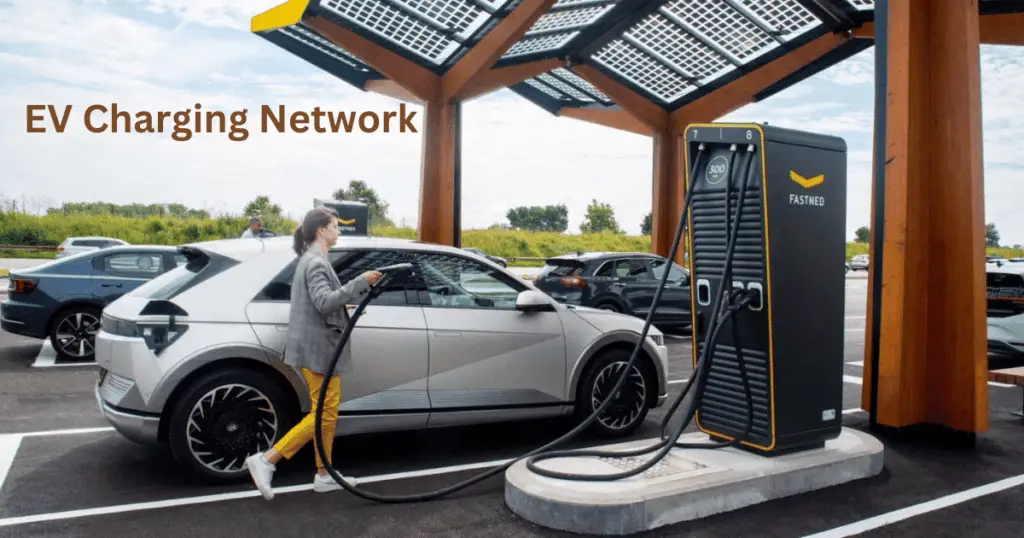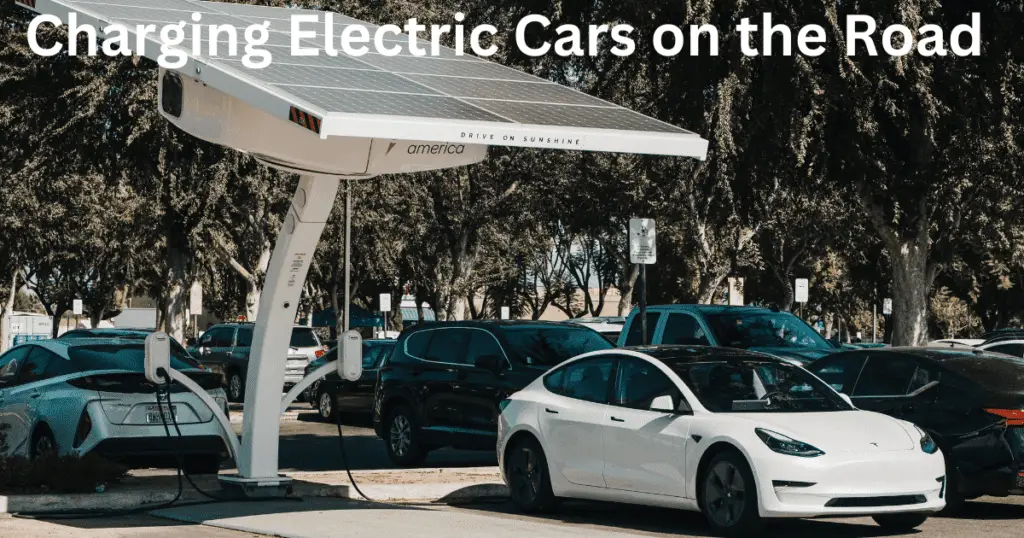In contemporary times, the electric vehicle (EV) upheaval has witnessed a remarkable surge, as an increasing multitude of individuals opt for electric automobiles as a more environmentally responsible and sustainable mode of transportation. As the prominence of electric vehicles experiences a continuous ascent, the call for reliable and effective charging infrastructure has grown exceptionally pressing. This all-encompassing evaluation plunges into the diverse facets of charging electric cars on the thoroughfare, proffering profound perspectives on the realms of charging infrastructure, velocity, expenditures, ecological repercussions, user-friendliness, and the forthcoming landscape of electric vehicle charging.
1. Charging Infrastructure
At the core of the electric cars charging ecosystem lies the essential element of charging infrastructure. Charging infrastructure encompasses the network of charging stations and their strategic distribution across the road network. These charging stations take on various forms, ranging from standard home chargers to high-speed charging stations situated along highways.
The presence and ease of access to charging infrastructure play a central role in spurring the embrace of electric vehicles. Fortunately, substantial progress has been achieved in this domain throughout the years. Charging networks like Tesla’s Supercharger and ChargePoint have notably broadened their reach, rendering it progressively effortless for electric vehicle proprietors to pinpoint a charging station.
2. Charging Speed
Charging speed stands as a pivotal consideration for electric vehicle users. Swifter charging times translate into diminished waiting periods and heightened convenience. The velocity of charging varies significantly, contingent upon the charger type and the electric car’s compatibility.
Level 1 Charging
This method is the slowest, involving the connection of your electric car to a standard household outlet. While suited for overnight charging, it proves less than ideal for on-the-road charging due to its leisurely pace.
Level 2 Charging
Level 2 chargers offer a faster alternative and are accessible in diverse locations, including public charging stations, shopping centers, and workplaces. They can charge an electric vehicle substantially quicker than Level 1 chargers, rendering them a more pragmatic choice for on-the-go charging.
Fast Charging
Fast-charging stations, exemplified by DC fast chargers, are expressly designed for expeditious charging. These stations have the capability to furnish an electric cars with a substantial power boost in a relatively brief span, rendering them ideal for extended journeys.
3. Charging Costs
Electricity expenses incurred for charging an electric cars generally fall below the costs associated with gasoline or diesel. The precise cost of charging can fluctuate, influenced by a multitude of variables, including your geographical location, prevailing electricity rates, and the charger type you employ.
It is noteworthy that several electric vehicle manufacturers offer complimentary charging at their proprietary charging networks for a restricted period as a component of the vehicle purchase. For instance, Tesla extends free Supercharger access for a specific mileage threshold, thereby significantly mitigating the costs associated with long-distance travel.
4. Environmental Impact
A significant impetus driving the adoption of electric vehicles is their profound mitigation of environmental impact. Electric cars, in stark contrast to their internal combustion engine counterparts, release absolutely no emissions from their tailpipes, leading to an augmented air quality and a marked reduction in contributions to greenhouse gas emissions. The environmentally responsible characteristics of electric vehicles are further heightened when the electricity harnessed for charging is sourced from renewable origins.
It is imperative to acknowledge that the environmental imprint of electric cars is intrinsically linked to the method of electricity generation. Regions marked by a substantial prevalence of renewable energy sources, such as solar and wind, relish the benefit of a significantly diminished carbon footprint in the operation of electric vehicles. Some electric vehicle manufacturers even extend the opportunity to charge your car with renewable energy, thereby amplifying the positive influence on the environment
5. Convenience and Accessibility
The landscape of convenience in charging electric cars on the road has witnessed substantial enhancements in recent years. A multitude of public charging stations now come equipped with user-friendly features, including intuitive touch-screen interfaces, mobile applications designed for locating and reserving charging stations, and the introduction of contactless payment options. These progressive developments have rendered the charging process notably smoother and more user-centric.
Furthermore, the proliferation of charging stations in highly frequented destinations such as shopping centers, restaurants, and hotels has streamlined the integration of charging electric vehicles into the daily routines of their owners, amplifying the accessibility and convenience of electric car charging.
6. Range Anxiety
A persistent concern associated with electric cars is the phenomenon known as “range anxiety.” This apprehension revolves around the fear of depleting the battery’s charge before reaching a charging station. Nonetheless, the electric vehicle landscape has seen remarkable advancements in battery technology and the expansion of charging infrastructure, contributing to the alleviation of range anxiety.
Modern electric cars are equipped with more capacious batteries, bestowing upon them extended driving ranges. Simultaneously, fast-charging networks are proliferating, furnishing electric car owners with rapid replenishment options. Additionally, the advent of user-friendly route planning applications such as A Better Route planner has rendered it significantly easier to mitigate range anxiety and confidently embark on prolonged journeys.
7. EV Charging Networks
Numerous electric vehicle manufacturers have dedicated resources to establish their charging networks, elevating the charging process for their clientele. A notable exemplar exists in the Tesla Supercharger network, celebrated for delivering high-velocity charging amenities exclusively tailored for Tesla vehicles. These in-house networks furnish a uniform and effective charging encounter for owners of these automobiles.
Furthermore, many public charging networks like ChargePoint and EV go offer compatibility with a wide range of electric vehicles, making them a convenient choice for drivers of various EV brands. These networks often feature comprehensive apps and websites that help users locate available charging stations and check their status.


8. The Future of Electric Car Charging
As the electric vehicle market experiences continued growth, the outlook for the future of electric car charging appears exceedingly promising. Anticipated are several pivotal developments that will profoundly influence the charging landscape.
Accelerated Advancements in Fast Charging
Projections indicate that fast-charging technology will undergo further refinement, rendering it even faster and more pervasive. This advancement is poised to markedly reduce charging durations, rendering electric vehicles an even more compelling choice for long-distance journeys.
Elevated Battery Technology
Strides in battery technology are poised to usher in increased energy density, elongated driving ranges, and swifter charging times. This innovation is poised to address and ultimately eradicate the specter of range anxiety, significantly enhancing the overall convenience of electric cars.
Smart Grid Integration
The integration of smart grid technology will facilitate the more efficient utilization of electricity resources. This will contribute to grid equilibrium and serve to alleviate the stress on the electrical grid during peak charging periods.
Pervasive Adoption of Renewable Energy
Anticipate an increasing prevalence of charging stations harnessing renewable energy sources, emphasizing the resolute dedication to curtail the environmental impact of electric cars. This assimilation will contribute to an augmentation of the environmental advantages associated with electric vehicles, strengthening sustainability within the realm of transportation.
Conclusion
In conclusion, the evolution of charging electric cars on the road has marked a remarkable journey, characterized by noteworthy improvements in charging infrastructure, speed, and accessibility. The cost-effectiveness of charging is evident, and the environmental advantages are substantial, particularly in regions with a notable prevalence of renewable energy sources.
In the ever-changing landscape of the electric vehicle market, we can foresee a future filled with elevated convenience, accelerated charging, and a more pronounced alleviation of range anxiety. The horizon of electric car charging is illuminated with potential, propelled by the continuous progression in battery technology, seamless grid integration, and the growing embrace of renewable energy sources.
Frequently Asked Questions (FAQs)
Q1. What is the Typical Charging Duration for Electric Cars on the Road?
The time required to charge an electric vehicle while on the road is subject to several variables, encompassing the charging station’s swiftness, the capacity of your car’s battery, and its initial charge level. Fast-charging facilities, characterized by their ability to provide a substantial power boost, often achieve an 80% charge within a span of 30 minutes to an hour. In contrast, Level 2 chargers, superior in speed compared to standard home outlets, might necessitate several hours to attain a full charge.
Q2. Are there an adequate number of charging stations for electric cars?
The presence of charging stations for electric cars exhibits regional variation. Nonetheless, numerous regions have witnessed substantial expansion in charging infrastructure. Prominent electric vehicle manufacturers and third-party charging networks continue to invest in the establishment of new charging stations. Additionally, user-friendly tools such as mobile applications and websites have emerged to facilitate the identification of charging stations along your chosen route.
Q3. What is the ecological impact of charging an electric car?
The act of charging an electric car carries a significantly reduced ecological footprint compared to traditional gasoline-powered vehicles. Electric cars generate zero emissions from their tailpipes, translating into diminished air pollution and a lessened contribution to greenhouse gas emissions. However, the environmental impact remains contingent on the source of the electricity utilized for charging. Charging with renewable energy sources further curtails the carbon footprint of electric vehicles.
Q4. How can I effectively plan extended road trips with an electric car?
Devising a robust strategy for extended road trips with an electric car involves several key considerations. These include evaluating your vehicle’s range, identifying the locations of charging stations along your route, and employing route planning tools like A Better Route planner. It is paramount to allocate time for charging during your travel itinerary to ensure a seamless and stress-free journey.
Q5. What does the future hold for electric car charging?
The future of electric car charging brims with exciting potential. Anticipate swifter charging times, enhanced battery technology with extended ranges, deeper integration with intelligent grid systems, and a heightened reliance on renewable energy sources. These impending advancements will fortify the convenience and sustainability of electric cars, rendering them an increasingly appealing choice for a broader spectrum of drivers.

